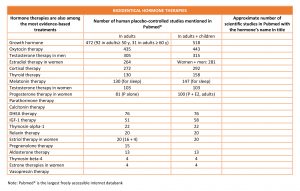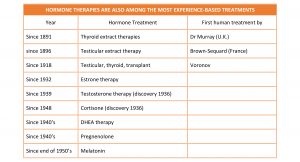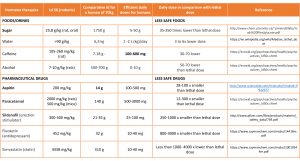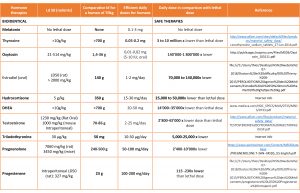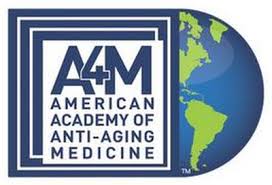Hormone Therapies are Among the Best Scientific Evidence-Based Treatments in Medicine
Hormone therapies are among the best evidence-based therapies in medicine. Most of them are supported by large numbers of randomized controlled clinical trials, including double-blind placebo-controlled studies.
Two reasons explain why most hormone therapies are backed by more evidence than the majority of other medications in pharmacies. The first reason is that most hormone therapies have been investigated for more than 80 years (since their discovery). As hormones are not patternable, any individual or institution may research them. This explains the important number of different institutions and research centers that investigate hormone therapies throughout the world. For newly invented pharmaceutical drugs, the number of research studies is usually smaller because the drugs have been recently invented and, therefore, exist for shorter (10-20 years) periods, which signifies less time to conduct studies. Moreover, usually only one drug company makes and orders all the research because it has a monopoly on the product.
The tables below provide an overview of the number of placebo-controlled trials supporting bioidentical and non-bioidentical hormone therapies that can be found on Pubmed, the most important freely accessible internet medical databank.
Bioidentical means that the hormone has the same molecular structure as the corresponding hormone made in the human body, whereas non-bioidentical means that the hormone’s molecular structure slightly differs from that of the corresponding one in the body.
Hormone Therapies are Among the Most Experience-Based Treatments in Medicine
An additional advantage of hormone therapies is that a majority of them are strongly experience-based, having been used since their first discovery 30-120 years ago. This extensive experience in hormone therapies has brought valuable knowledge on how to manage them safely and efficiently.
The table below provides the approximate years when physicians started various types of hormone treatments for the first time.
Hormone Therapies Offer High Safety if Administered at Physiological Doses
Most hormone therapies are among the safest therapies, even for cancer.
An LD50 (or lethal dose 50%) of a product is the dose lethal enough to kill 50% of the members of an animal species that consume it. The (animal) LD50 for a hormone is usually substantially higher than that of the pharmaceutical drug aspirin, for example, while the minimal effective dose in milligrams is usually far lower than that of aspirin. A high LD50 signifies that a product is safer. This means that most hormone therapies are safer and more efficient than many pharmaceutical drugs or even foods at a given dose.
The table below shows the LD50s of various hormone therapies in comparison with those of sugar, water, caffeine, alcohol and some common drugs.
LD50: 50% of members of a species die at this dose
For most hormone therapies, the scientific literature does not report lethal cases, which further confirms the high safety they offer, whereas for several newly invented pharmaceutical molecules, the risk of premature death is a problem and must be considered when making the decision of whether to prescribe them.
Side effects of hormone therapies are in most cases consequences of overdoses, as can happen with any drug, no side effects per se, because the molecular structures of hormones are adapted to the human body.
